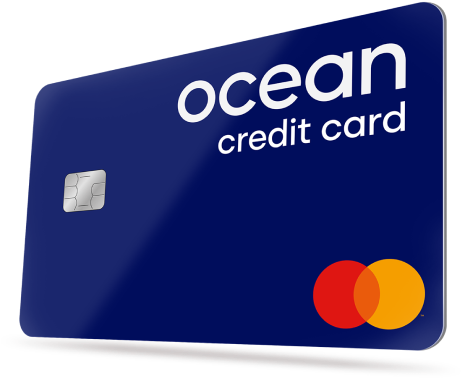Our step-by-step guide to applying for a credit card
A credit card can be a helpful tool when you need to make a large purchase or pay for unexpected bills. If you’re over 18 and a resident of the UK, you may be eligible for a credit card. Here are some things you should do before applying:
1. Consider your financial goals
Are you aiming to consolidate debt? Some credit cards offer a 0% interest period to help you pay off your balance within a certain timeframe. If your goal is to improve your credit score, then a credit builder card would be the perfect option. These are specifically designed to help you build your score with responsible use.
2. Prepare your finances and credit report
When you take out a credit card, you’re taking on more debt. If you already have outstanding debt like a loan or store cards, it’s worth considering minimising these first. Some credit cards can help you to manage your debt, such as a balance transfer card. But you should make sure that you can manage whatever repayment(s) you’ll end up with.
It’s a good idea to check your credit report too. You can see what sort of rating you have and if you have good or poor credit. If you have poor credit or a thin credit history, you may be limited to credit building credit cards and similar products. It’s worth knowing this before you start the process, so you can limit any rejections.
There are quick ways to improve your score that can boost your application. Things like getting on the electoral roll and removing mistakes from your credit report can make you more likely to be accepted when you apply.
3. Research your options
There are several different types of credit cards. They all have varying terms and conditions, so it’s best to find one that’s suitable for you.
-
Balance transfer credit cards are good for consolidating and paying off existing credit card debt at a lower interest rate.
-
Purchase credit cards can be used to make new purchases and spread the cost over time with an introductory 0% interest period.
-
Reward credit cards let you earn points on everyday spending, which can be redeemed for various benefits like travel, shopping, or cash back.
-
Cashback credit cards allow you to a percentage of cash back on purchases made with the card.
-
Travel credit cards are good for making purchases abroad without foreign transaction fees and earning rewards on travel-related expenses.
-
Credit builder credit cards can help to improve or build credit scores, often targeted at those with limited or poor credit history.
Other things to look out for:
Annual Percentage Rate (APR)
The APR is the yearly cost of using your credit card, including interest and fees. It's a good idea to confirm that the APR you see when applying will be the one you receive if approved. Some providers only offer the advertised APR to some applicants, so you might not always get the rate you expect.
Credit limits
Your credit limit is the maximum amount you can borrow on your card. This limit is determined by your credit score and other factors that assess your ability to manage credit.
Fees and charges
Be aware of the additional fees that can apply in various situations. For example, credit cards typically charge fees for exceeding your credit limit, or for late or missed payments. There are also often fees for purchasing foreign currency or withdrawing cash.
Introductory offers
Pay attention to what happens once any introductory offers on your card expire. For instance, after an initial period with no interest on purchases or balance transfers, you might face high interest rates if your balance isn't cleared. It's easy to be caught off guard, so plan accordingly.
Checking your eligibility
Eligibility checkers show you how likely it is that you’ll be accepted for a product before you apply. To use an eligibility checker, you’ll need to supply a few personal details such as your:
-
Name
-
Address
-
Income
-
Occupation
-
If you have any dependents
Eligibility checkers only use a ‘soft search’ - so there’s no trace on your credit file. They’ll let you know whether your application is likely to be accepted or rejected.
This stops you from making a full application and being rejected for several products. All applications – or ‘hard searches’ - leave a mark on your report. It’s therefore best to limit your applications and only apply for cards you’re likely to be approved for.
Filling in your application
If you’re feeling confident about your score and eligibility, then it’s time to apply.
You may need to provide a few more details than you did in your eligibility checker to get an offer from the lender. The lender will be carrying out a full credit search to confirm you are who you said you are. With most lenders you can apply directly online, and you’ll usually get a decision straight away.
If your application gets approved
If your application gets approved, then great news, all you need to do is wait for your card to arrive.
In the meantime, you should thoroughly go over your agreement with the lender. Make sure you know all the terms, conditions, fees and charges before you start using your card.
How to activate a credit card
Once your new credit card arrives, you'll need to activate it before you can start using it. You can do this in a few different ways:
Online activation: Log in to your online banking account or the credit card provider's mobile app. Look for the 'Activate card' option in your account dashboard or under card management settings.
Digital verification: Use your provider's app to scan your card and complete a quick facial recognition or fingerprint verification process. Many banks now prefer this secure method (often referred to as biometric security) over traditional activation.
Phone activation: Call the automated activation number provided in your welcome materials. You'll typically need to enter your card details and possibly answer security questions to verify your identity. Important: Only use a phone number that you’re certain is from the provider to prevent you sharing information with another party.
Contactless verification: Some newer providers now allow you to activate by tapping your card against your NFC-enabled smartphone while using their banking app.
👉 Tip: Even after activation, many providers require you to complete one Chip & PIN transaction in a shop or ATM before contactless payments will work for the first time. This is an extra security step, so don’t worry if contactless doesn’t work straight away.
After activation, remember to:
- Set up your digital wallet if you plan to use mobile payments
- Configure any spending alerts or notifications
- Register for online banking if you haven't already
- Securely dispose of any old cards the new one is replacing
Most cards activate instantly once you've completed the verification process. If you experience any issues activating your card, contact your provider's customer service team directly for assistance.
How long do you have to activate a credit card?
Most credit card providers don’t set a strict deadline for activation, but it’s best to activate your card as soon as possible—ideally within 30 to 60 days of receiving it.
If you wait too long:
- The card could be automatically cancelled by the issuer
- You may need to request a replacement card
- Any promotional offers (like 0% interest periods or cashback deals) might expire if not used within a set timeframe from approval—not activation
Check your welcome documents or the provider’s website for any specific time limits. If you're unsure, it's worth contacting the card issuer to confirm.
And remember even if you don’t plan to use the card right away, activating it and setting up alerts or limits can help prevent unauthorised use.
If your application gets rejected
It can be disappointing to get your application or eligibility check rejected. If this happens to you, avoid applying for any other credit straight away. Instead, take a look at the steps you can take to boost your chances of being approved for a credit card next time.
Spend some time trying to increase it before you apply again. If you apply for too much credit, too quickly it could give lenders a bad impression. Always remember to do an eligibility check first as this will not affect your score.
What to do when you’re accepted for a card
The most important thing to remember about getting a credit card is to spend responsibly. This means:
- staying within your limit
- always making your repayments on time
- paying at least the minimum every month – but paying more where possible.
Ocean Credit Card
See if it's a YES before you apply
- Up to £8,000 credit limit
- Checking won't affect your credit score
- Get a response in 60 seconds
39.9% APR
Representative (variable)
Intelligent Lending Ltd (credit broker). Capital One is the exclusive lender.

Disclaimer: We make every effort to ensure content is correct when published. Information on this website doesn't constitute financial advice, and we aren't responsible for the content of any external sites.






